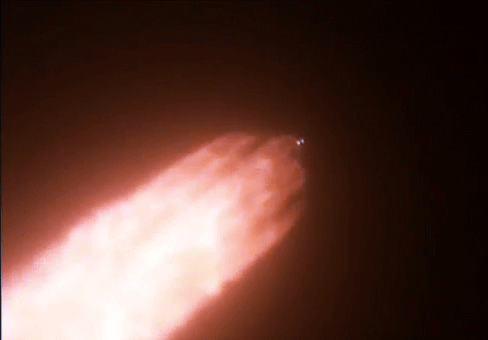Jason Davis • Oct 08, 2012
SpaceX's first paid cargo run off to bumpy start
SpaceX successfully sent their first paid Dragon capsule towards the International Space Station Sunday night. But the bigger story happened on the way to orbit.
According to SpaceX, engine number one on the Falcon 9 lost pressure and shut down approximately one minute, 19 seconds into the flight. Long-range tracking cameras showed an orange flash blow outward from the engine, followed by several pieces of debris flying off the vehicle. SpaceX says the engine did not explode, and the materials falling away from the rocket were panels designed to relieve pressure inside the engine bay.
I grabbed eight frames from the launch video showing the failure, adjusted them to bring out more detail and created an animation:

It certainly looks harrowing, but the Falcon 9 is designed to withstand an engine failure and still be able to place Dragon into its intended orbit by simply increasing engine burn times. That’s exactly what happened here.
However, after releasing Dragon, the second stage was supposed to execute a second burn before deploying a satellite payload for Orbcomm, another paying customer. NASA safety rules say that if an engine dies on the way to space, an additional burn is not allowed. Therefore, Orbcomm's satellite was deposited into an orbit much lower than intended.
Orbcomm is currently trying to see what they can do to raise their satellite's orbit (link goes to PDF). In the meantime, SpaceX is likely trying to figure out what caused the pressure drop in engine one. Dragon is still on course for its Wednesday arrival at the International Space Station.

Support our core enterprises
Your support powers our mission to explore worlds, find life, and defend Earth. You make all the difference when you make a gift. Give today!
Donate

 Explore Worlds
Explore Worlds Find Life
Find Life Defend Earth
Defend Earth

